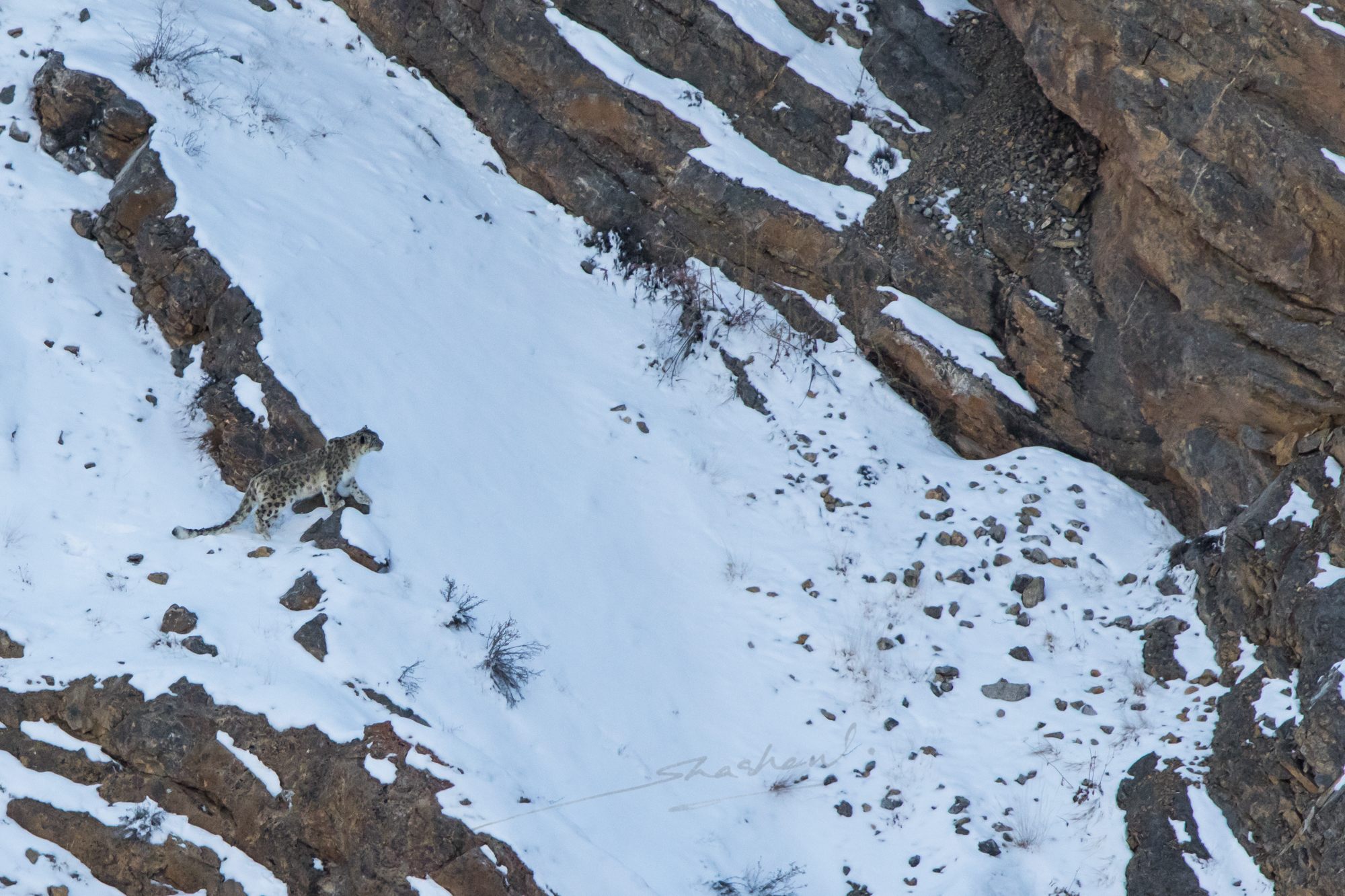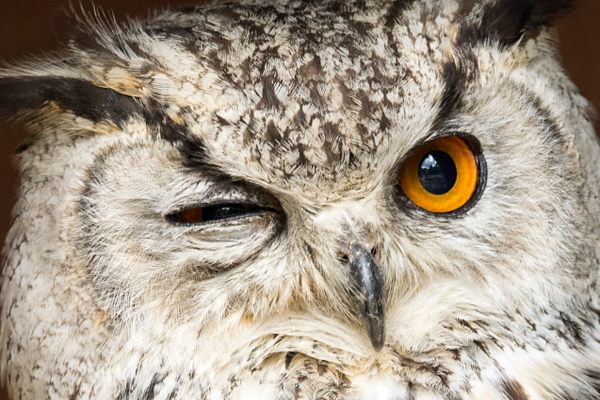Snow Leopards Shouldn’t Have to Deal With Our Garbage
But as this photo shows, they do.

When Shashanka Nanda was in his late teens, he went on a climbing trip to the Pir Panjal mountains, in the inner Himalayas. One night, as his friends were setting up camp, he took a short hike by himself to look for firewood. On his way back, he stopped and watched some bharal grazing on a nearby cliff. Suddenly, all hell broke loose. “It was chaos,” he remembers. “The sheep started running left and right.” A perfectly still shape Nanda had taken for a rock was actually a snow leopard, waiting in ambush. It rocketed after the sheep. “It was one of the most amazing things I had ever seen in my life,” he says.
Fast forward a couple of decades. Still blown away by his encounter, Nanda developed a keen interest in conservation. He took up wildlife photography, traveling all around India to photograph tigers, vultures, and monkeys. Although he kept dreaming of snow leopards, none materialized. “It’s not something that you show up and you hope to find them,” he says. “You have to make a concerted effort.” So last year, he says, “I decided enough is enough. It’s time to make that dream come true.”
In February 2018, after about a year of planning, Nanda and two friends drove three days from his home in Delhi to a village in the Spiti Valley, a mountain desert in the Himalayas where about 30 of the big cats live. On their second day, they found one: a male down in a crevasse, crouched over a recently killed sheep. “I took two pictures and then I started crying,” Nanda says. “It took me about ten minutes to compose myself.” Then he looked closer: “That’s when I realized it was sitting in trash.”

There are some places you just don’t expect to see garbage. But one of the enduring lessons of the contemporary age seems to be that it’s often there anyway. There don’t even have to be people nearby for trash to flourish: There’s an uninhabited island in the Pacific, once described as a “near-pristine” ecosystem, that is now strewn with millions of pieces of plastic. But when communities experience sudden influxes of newcomers, trash problems are often not far behind.
That’s what has been happening to Spiti. Over the past few years, the roads that lead up the mountains have improved, and “it has found its place on the tourist map,” Nanda says. But even as other infrastructure gets built, many of the villages there still lack set garbage management systems.
Local people are used to making do by reusing items (although urbanization means they have more stuff to deal with, too). The villages are beginning to implement larger-scale systems, and support coordinated trash pick-up campaigns. But often, visitors just drop their junk on the ground. It then generally gets picked up by snowmelt, funneled into a river, and taken far away, often to the same place where animals stop to drink. When they saw the leopard, “we were far away from the village,” Nanda says. “But trash found its way there.”

Nanda spent hours photographing the male as he ate his kill, and talking to other visitors as they joined him over the course of the day. Later in his trip, he followed a different cat, and got the classic snow leopard photo he’d been dreaming of for decades: a female with her paw on a boulder, poised against a snowy backdrop. Everything in the picture is silver, brown, and white. There are no green plastic bags or red wrappers to be seen.
Sometimes, though, the fulfillment of one dream can beget another very different one. When Nanda and his friends left, he says, they took extra care to bring all their plastic waste with them. He’s been speaking to contacts in Spiti, trying to figure out how to educate visitors, including photographers like himself, about trash pack-out practices.
When he got back to his computer and began going through his images, he decided to start by sharing his first photo, of the snow leopard crouched in the garbage. “I wanted to point out the real story,” he says. If trash is spreading everywhere, images of it should, too.

















Follow us on Twitter to get the latest on the world's hidden wonders.
Like us on Facebook to get the latest on the world's hidden wonders.
Follow us on Twitter Like us on Facebook